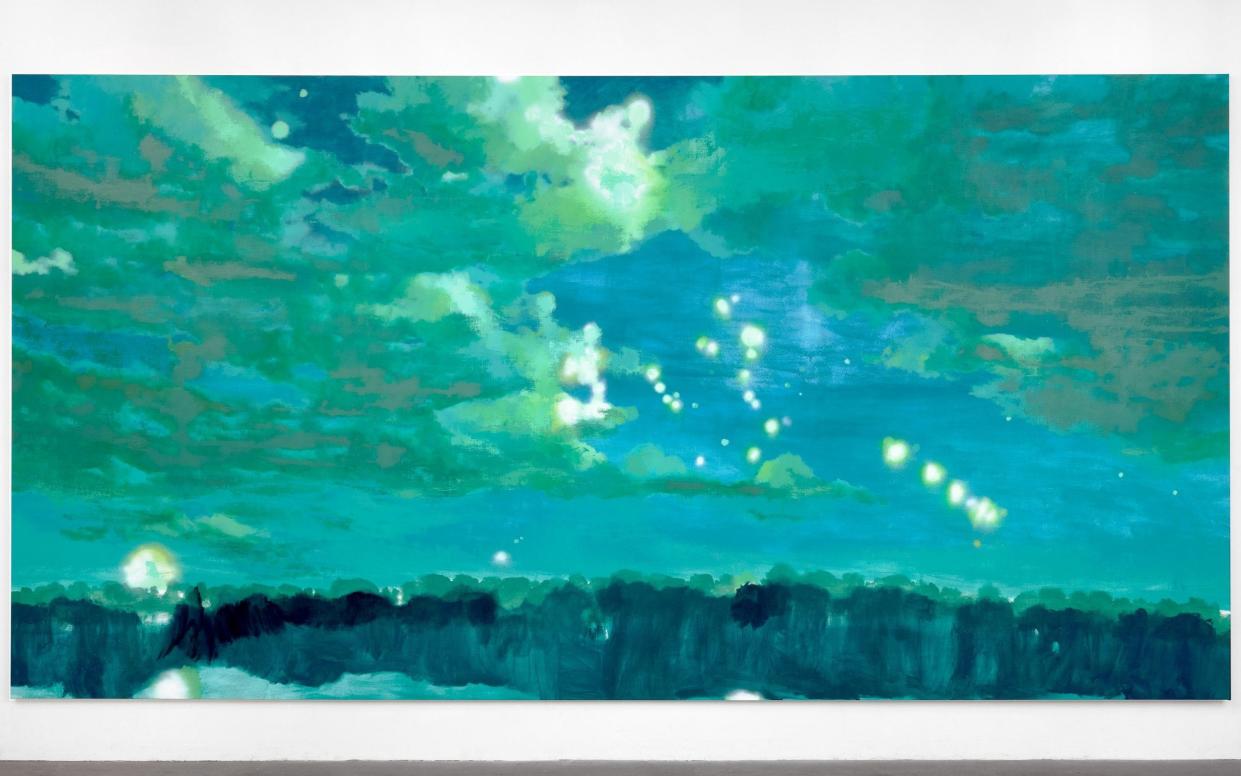The artist who painted for Saddam – and now fills north London with beautiful menace

“Memory with salt on it.” That’s how the 38-year-old painter Mohammed Sami, whose new exhibition, The Point 0, opens this week at north London’s Camden Art Centre (CAC), describes his work’s subject matter and effect. It’s tough to think of an artist whose memories require less seasoning.
Sami was born in Baghdad, under the dictatorship of Saddam Hussein, and his incandescent talent was soon co-opted by the regime: as a child prodigy, he worked on murals bolstering Saddam’s power. In the chaos that followed the downfall of the Ba’athist government, he fled to Sweden and spent nine months inside a refugee camp where, he says, for the first time he felt free. That camp, glowing orange, appears like a glimpsed Valhalla in a new work at CAC. The low vantage point, beneath a forbidding wall of rock, is that of someone emerging from a grave.
Later, he studied at Goldsmiths before settling in east London, where, without recourse to photographs or sketches, he paints large, sad, haunting pictures, with a distinctly uneasy, dreamlike atmosphere; flashback-like, they evoke nightmarish moments and sensations from his past. Ashfall I (2022), for instance, in which an apocalyptic cloud pelts an Escher-like cityscape with cindery clumps, records his recollections of living in Baghdad while nearby oil fields burned. With its aqueous blues and greens, One Thousand and One Nights (2022) summons up Claude Monet, except it depicts not reflections in a pond but a “shock-and-awe” barrage experienced through a night-vision device.
Understandably, Sami resists discussion of his astonishing biography; he doesn’t want to be pigeonholed as a “refugee artist” obsessing over bygone traumas. Yet within his paintings, there are many reminders of his upbringing: a portrait on a wall, for instance, of Saddam in distinctive khaki uniform, the Iraqi leader's face (as if redacted) obscured by shadow.
Indeed, Sami often paints interiors, always empty – abandoned? – and transmitting a menacing air. In one, the shadow cast by a spider plant suggests the presence of an enormous eight-legged intruder: an almost-too-obvious metaphor for the insidious, all-pervading reach of a totalitarian regime. These baleful rooms, with their uncannily rumpled rugs, may remind you, indirectly, of images by Francis Bacon.

Instead of people, Sami also frequently depicts clothes: a rack of black garments on garish plastic hangers; translucent vestments, like melancholic souls in limbo, hung upon a washing line. It’s hard not to think of executed bodies and mass graves. Tombstone-like seats in The Parliament Room (2022) evoke a war cemetery; the precarious stack of patterned mattresses in the lusciously painted Ten Siblings (2021) could be part of a mausoleum.
For me – and, indeed, CAC’s director, Martin Clark, who programmed this show after encountering his stuff on the South Bank – Sami was the stand-out artist in the Hayward Gallery’s 2021 painting exhibition, Mixing It Up. Since then, New York’s Museum of Modern Art and Tate have both shelled out for his work. It’s easy to understand why: he’s a brilliant new voice in contemporary art, who’s reinvigorating the hoary genre of history painting by passing contemporary events through his own impressionistic filter.
From tomorrow until May 28. Info: camdenartcentre.org


